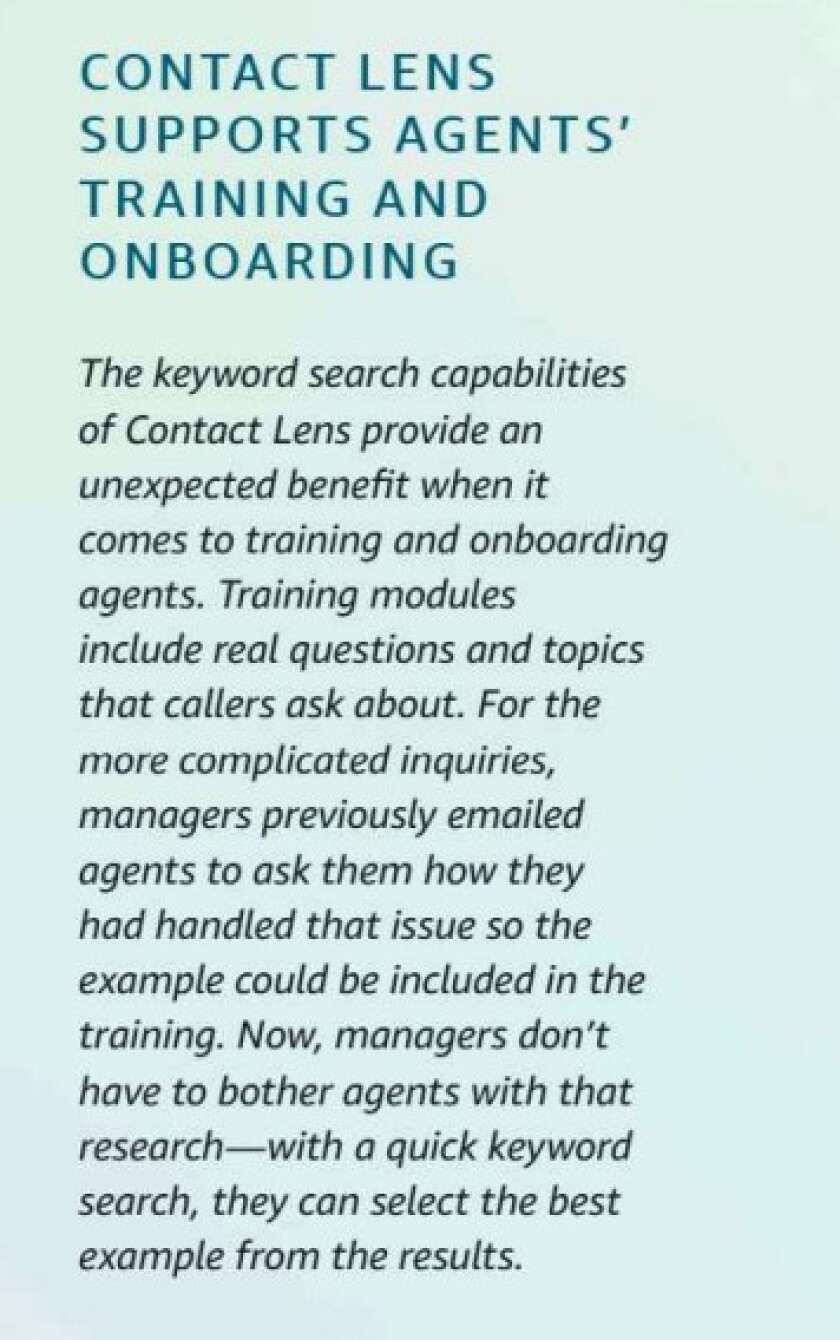Managing inquiry volume at a contact center is challenging during periods of regular business, let alone during peak periods. Budget cuts, staff attrition, and difficulty filling vacant positions put increasing pressure on front-line staff and their managers to do more with less.
That was the situation facing the Wisconsin Department of Revenue (DOR) in 2023 when they asked Amazon Web Services (AWS) about the potential of artificial intelligence (Al) to transform their contact center. Facing a 30 percent reduction in staff in 2025, they succeeded in shortening hold times, avoiding outages, and cutting costs by 66 percent. Here's how Wisconsin used Amazon Connect and Al to modernize operations — just in time for individual income tax season.
One contact center, two critical audiences: Taxpayers and employees
The Wisconsin DOR administers the state's major tax laws, including the collection of individual income taxes, sales taxes, corporate income taxes, and excise taxes. It also assists local governments across the state with property assessment and financial management, forecasts state economic activity, administers the state's Unclaimed Property Program, and administers the Wisconsin Lottery, which provides property tax relief for homeowners.
The department's contact center handles a variety of inquiries related to these functions, including questions about tax return status, refundable credits, billing and payments, registering for online services, and claiming lottery prizes, to name just a few. In all, the center responds to roughly 700,000 inquiries per year.
In addition to fielding questions from taxpayers, the contact center also handles tech support and service calls from DOR employees, which makes the platform even more of a lynchpin for the agency. If staff can't get the technical assistance they require to do their jobs, they can't meet the needs of external constituents in a timely manner.
Downtime and duplication: Challenges with the old system
The technology infrastructure for the DOR's previous contact center involved two different systems cobbled together. Seamless operations required the two systems to work well together and to be operational at the same time. Although the caller experience was relatively smooth, delays sometimes occurred when calls had to travel across the country before reaching agents in Madison.
The bigger problem, however, was downtime. Because the backend systems were interdependent, the entire operation shut down when something went wrong with one component. "At one point we had 51 hours of outages in a single year-that's 51 hours we couldn't take taxpayer calls," said Brad Thome, customer service bureau director at the Division of Technology Services. "Since moving to Amazon Connect, that number has dropped to zero." A more reliable, less costly contact center would free up both budget and staff time, which the department could then invest in more innovative and strategic projects.
From workshop to go-live in four months
In December 2023, the DOR chief information officer heard about Amazon Connect at a workshop and asked the agency's contact center team to find out more. After reviewing some demos and a pricing analysis, the team wanted to take the first step by making sure that the platform satisfied security and compliance standards. AWS staff helped the DOR team get the information they needed.
"The AWS staff were there with us through the entire project from beginning to end," Thome noted. "They supported us through the initial demos to make sure the product had all the features we needed. They helped us put together a budget estimate based on our existing call center consumption. And then they connected us with the appropriate implementor."
After deciding to move forward with Amazon Connect, AWS introduced the DOR to ScaleCapacity, an AWS Partner with the technical expertise required of the aggressive project timeframe. The DOR had specified a go-live date in September 2024, which would give them sufficient time to adapt to the new system before individual income tax season. That left just four months to complete an implementation that typically takes more than six months.
Al-powered operations and impact

"One of our supervisors said how helpful it was to finally see, in real time, how many calls each agent was taking and how long they were spending on them," said Amanda Mosel, customer service director for the Wisconsin DOR. "That helped us decide how to assign hours to seasonal staff, which was crucial given the tight budget."

Al-powered call summaries and sentiment analysis provide another time-saving feature. When performing QA, managers no longer must sit through entire calls-some of which are 45 minutes long. Now, they can quickly ascertain what the call was about and use the sentiment analysis to pinpoint where and why the interaction took a wrong turn.
What's next: Expanding features and modernizing further
After the new system launched and exceeded performance during its first individual income tax season, the DOR team shifted focus to exploring new features. They plan to build out the multilingual capabilities of Amazon Polly, as well as turn on scheduling and forecasting tools in Contact Lens. They also want to customize reporting and metrics dashboards to more closely resemble what they were used to seeing in their old system.
Overall, the project has been a huge win for DOR. The actual cost savings of 66 percent exceeded the 50 percent estimated savings, and hold times have decreased. The best part? Zero outages since launch.
In addition to these quantitative results, the team had some important qualitative wins. They proved that an iterative approach to launching new technology works, and they confirmed they could use generative Al responsibly. The agency is now developing a governance process to help identify and prioritize use cases for future Al implementations. The successful contact center project has paved the way for future modernizations that improve services and deliver even more value for Wisconsin taxpayers.
For further information on Amazon Connect, please email aws-california-team@amazon.com.








